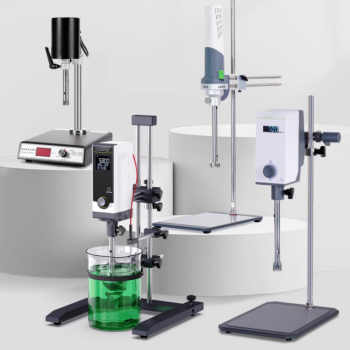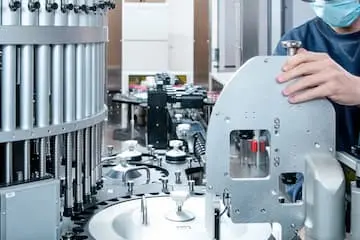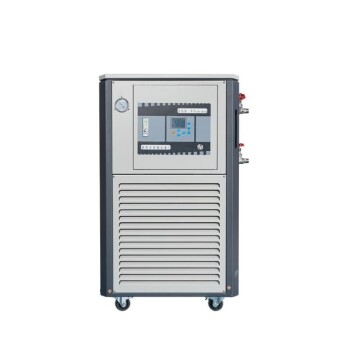Ultra Low Temperature Freezers are essential for laboratories requiring precise and stable cold storage for sensitive biological samples. Our range includes vertical freezers with capacities from 28L to 938L, all maintaining a consistent -86°C. Ideal for storing DNA, RNA, vaccines, enzymes, and other critical reagents, these freezers feature stainless steel interiors, advanced temperature control systems, and energy-efficient designs. Whether you need compact units for small labs or large-capacity freezers for research facilities, KINTEK offers reliable solutions to ensure your samples are preserved under optimal conditions.
Toggle Categories
Get Instant Support
Choose your preferred way to connect with our team
-
Get Free Quote Fill out form for detailed pricing
-
Send Email Detailed inquiry support
-
WhatsApp Quick mobile chat
Response Time
Within 8 hours on working days, 24 hours on holidays
ult freezer

938L Vertical Ultra Low Temperature Freezer for Advanced Laboratory Storage
Item Number : KTFDV-938

808L Precision Laboratory Vertical Ultra Low Temperature Freezer
Item Number : KTFDV-808

708L Ultra Low Temperature Freezer High Performance Laboratory Freezer
Item Number : KTFDV-708

608L Essential Laboratory Ultra Low Temperature Freezer For Critical Sample Preservation
Item Number : KTFDV-608

508L Advanced Vertical Ultra Low Temperature Freezer for Critical Laboratory Storage
Item Number : KTFDV-508

28L Compact Upright Ultra Low Temperature Freezer for Laboratory
Item Number : KTFDV-28

58L Precision Laboratory Ultra Low Temperature Upright Freezer for Critical Sample Storage
Item Number : KTFDV-58X

108L Vertical Ultra Low Temperature ULT Freezer
Item Number : KTFDV-108

158L Precision Vertical Ultra Low Freezer for Laboratory Applications
Item Number : KTFDV-158

208L Advanced Precision Laboratory Ultra Low Temperature Freezer for Cold Storage
Item Number : KTFDV-208

308L Precision Ultra Low Temperature Freezer for Laboratory Applications
Item Number : KTFDV-308

High Shear Homogenizer for Pharmaceutical and Cosmetic Applications
Item Number : COA-7
Advanced Ultra Low Temperature Freezers for Critical Sample Preservation
KINTEK's Ultra Low Temperature Freezers are engineered to meet the rigorous demands of modern laboratories. These freezers provide a stable -86°C environment, crucial for preserving the integrity of sensitive biological materials such as DNA, RNA, vaccines, enzymes, and other reagents. Our freezers are designed with precision temperature control systems to ensure minimal temperature fluctuations, which is vital for long-term sample storage.
Key Features and Benefits
-
Precision Temperature Control: Our freezers maintain a consistent -86°C with advanced microprocessor-controlled systems, ensuring your samples remain at the optimal temperature. The digital displays and alarms provide real-time monitoring and alerts for any deviations.
-
Energy Efficiency: Designed with eco-friendly refrigerants and high-quality insulation, our freezers reduce energy consumption without compromising performance. This makes them cost-effective for continuous operation in research and clinical settings.
-
Durable Construction: Built with stainless steel interiors and robust exteriors, our freezers are resistant to corrosion and easy to clean. The sturdy design ensures longevity even in high-usage environments.
-
Safety Features: Equipped with multiple safety mechanisms, including door locks, temperature alarms, and backup cooling systems, our freezers provide peace of mind for storing valuable and irreplaceable samples.
-
Variety of Capacities: From compact 28L units to large 938L models, we offer a range of sizes to suit different laboratory needs. Whether you're a small research lab or a large biobank, we have the right freezer for you.
Applications
Our Ultra Low Temperature Freezers are widely used in:
- Biomedical Research: For storing cell cultures, tissues, and other biological samples.
- Pharmaceuticals: Preserving vaccines, drugs, and other temperature-sensitive compounds.
- Clinical Laboratories: Maintaining the integrity of patient samples for diagnostics and research.
- Biotechnology: Supporting genetic engineering and other advanced research applications.
Why Choose KINTEK?
At KINTEK, we understand the critical nature of your work. Our freezers are backed by years of expertise in laboratory equipment, ensuring you get reliable and high-performance products. We also offer customizable solutions to meet specific laboratory requirements, including custom shelving and temperature settings.
Ready to secure your samples with the best in ultra-low temperature storage? Contact us today to discuss your needs or request a quote. Our team of experts is here to help you find the perfect freezer for your laboratory.
For more detailed specifications or to explore our full range of laboratory equipment, visit our website or reach out to our customer service team. Trust KINTEK for precision, reliability, and excellence in lab storage solutions.
FAQ
What Is An Ultra-low Temperature Freezer Used For?
What Are The Main Types Of Ultra-low Temperature Freezers Available?
How Does An Ultra-low Temperature Freezer Work?
What Are The Advantages Of Using An Ultra-low Temperature Freezer?
What Should I Consider When Choosing An Ultra-low Temperature Freezer?
Are Ultra-low Temperature Freezers Energy-efficient?
What Maintenance Is Required For An Ultra-low Temperature Freezer?
REQUEST A QUOTE
Our professional team will reply to you within one business day. Please feel free to contact us!
Related Articles

How to Choose and Optimize Water Circulating Vacuum Pumps for Your Lab
Learn how to choose and optimize water circulating vacuum pumps for lab applications, balancing efficiency and reliability.

How Freeze-Drying Cuts Transport Costs by 90% in Critical Logistics
Freeze-drying slashes transport costs by 90% in logistics for space, military, and disaster relief by reducing weight and volume. Learn how it works.

Freeze-Drying Decoded: The Science Behind Preserving Food, Medicine, and Research Materials
Discover how freeze-drying preserves food, medicine, and research materials with unmatched efficiency. Learn the science behind lyophilization and its applications.

Why Freeze-Drying is Indispensable for Preserving Sensitive Samples
Freeze-drying preserves sensitive samples by sublimation, maintaining molecular integrity and enabling stable, room-temperature storage. Essential for proteins, vaccines, and volatile compounds.

How Freeze-Drying Protects Delicate Biological Structures During Water Removal
Freeze-drying preserves biological samples by removing water without structural damage, ideal for vaccines, enzymes, and microbial cultures. Learn how it works.

How Laboratory Freeze Dryers Outperform Alternatives in Pharma, Food, Biotech & Research
Discover how lab freeze dryers outperform traditional methods in pharma, food, biotech & research—preserving potency, nutrients & integrity.

How Cascade Refrigeration Powers Ultra-Low Temperature Freezers Beyond Single-Stage Limits
Learn how cascade refrigeration enables ultra-low temperature freezers to reach -80°C and beyond, overcoming single-stage system limitations for critical sample storage.

Why Ultra-Low Temps are Non-Negotiable: The Science Behind Preserving Critical Biological Materials
Discover why ultra-low temperature freezers (-86°C) are vital for preserving cells, proteins, and vaccines. Learn the science behind ULT storage best practices.

Upright vs. Chest ULT Freezers: How to Choose the Right Configuration for Your Lab
Compare upright vs. chest ULT freezers for your lab: temperature stability, workflow efficiency, and cost analysis to protect sensitive samples.

How ULT Freezers Prevent Catastrophic Loss of Microbiological Samples
ULT freezers safeguard microbiological samples with advanced temperature control, contamination prevention, and emergency backup systems to prevent catastrophic loss.

Beyond the Spec Sheet: Matching Freeze Dryer Capabilities to Your Application's Critical Needs
Choose the right freeze dryer for pharma, food, or biotech. Key specs like cold trap temp, vacuum, and cooling rate impact drying speed and product quality.

How ULT Freezers Protect Scientific Discoveries in Genetics and Drug Development
ULT freezers safeguard genetic and pharmaceutical research by maintaining -80°C storage for DNA, proteins, and cell lines—preventing sample degradation and ensuring research validity.

Preserving the Irreplaceable: How ULT Freezers Protect Critical Samples Across Industries
ULT freezers at -80°C protect biological samples, vaccines, and research materials from degradation, ensuring long-term viability across industries.

Advanced Technologies for Precision Ceramics
Explores key technologies and preparation methods for precision ceramic components, highlighting their applications and challenges.

Understanding Cold Traps in Lyophilizers: Key Factors and Evaluation Methods
Explores the role, evaluation, and common misconceptions of cold traps in lyophilizers, emphasizing the importance of water capture efficiency.

Understanding the Functionality of Cryogenic Cold Traps
An in-depth look at how cryogenic cold traps operate and their applications in various fields.

Applications of Dry Cold Traps in Various Processes
Dry cold traps are used in multiple applications to condense and collect gases, protecting equipment and improving process efficiency.

Optimal Cold Trap Temperature in Freeze Drying: Balancing Efficiency and Performance
Exploring the impact of cold trap temperature on freeze-drying efficiency and equipment performance.

Distinguishing Between Condensers and Coolers in Refrigeration Systems
Explores the key differences between condensers and coolers in chiller refrigeration systems, focusing on phase change, heat transfer coefficients, and series heat exchangers.

Cold Trap Design and Water Vapor Transport in Lyophilization
An overview of cold trap design and its impact on water vapor transport and product quality in the lyophilization process.







